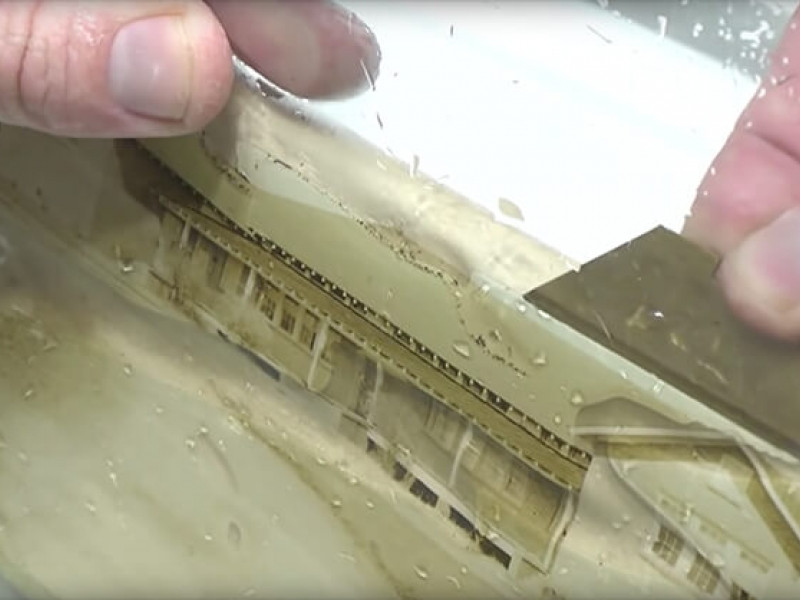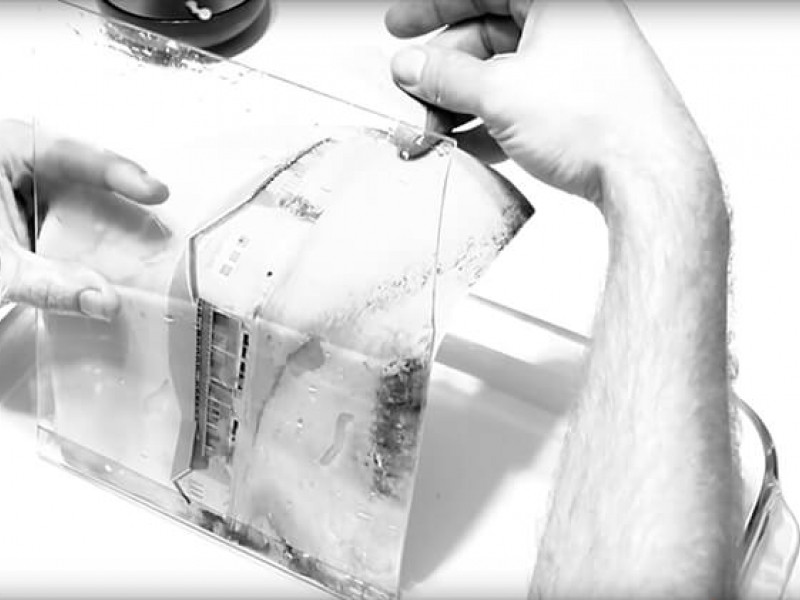Old photos are invaluable treasures, connecting us to the past and preserving precious memories. How To Clean Old Photos safely and effectively is essential for their preservation, and dfphoto.net is here to guide you. This article will provide a comprehensive guide to cleaning old photos, ensuring they last for generations, preserving family history, restoring vintage prints, removing stains, and preventing damage.
1. Why is Cleaning Old Photos Important?
Cleaning old photos is crucial for several reasons. It preserves memories, extends their lifespan, and maintains image quality. It’s about preserving the history and the stories they tell, offering a glimpse into the past, restoring family heritage, and protecting visual records. Neglecting to clean them can lead to irreversible damage.
1.1. Preservation of Memories
Photographs are tangible memories. Cleaning them ensures these memories remain vivid and accessible. You are safeguarding historical moments, protecting family legacies, and maintaining visual storytelling. This is especially important for future generations to connect with their roots.
1.2. Extending Lifespan
Dust, dirt, and fingerprints can degrade photos over time. Regular cleaning prevents this deterioration, contributing to long-term preservation, avoiding image decay, and ensuring archival durability. Proper cleaning methods can significantly extend the life of your cherished photographs.
1.3. Maintaining Image Quality
Cleaning removes contaminants that can obscure details and diminish clarity, enhancing visual clarity, restoring image details, and improving aesthetic appeal. This allows you to fully appreciate the original quality of the photograph.
2. Understanding the Risks of Cleaning Old Photos
While cleaning is essential, it’s crucial to understand the risks involved. Incorrect methods can cause irreversible damage. You need to avoid chemical damage, prevent physical damage, and consider emulsion sensitivity.
2.1. Chemical Damage
Using harsh chemicals can damage the photo’s emulsion, leading to fading, discoloration, or complete image loss. You should use photo-safe cleaners, avoid harsh chemicals, and ensure pH neutrality. Always test any cleaning solution on a small, inconspicuous area first.
2.2. Physical Damage
Rough handling or abrasive materials can scratch or tear the photo. Use gentle techniques, avoid abrasive materials, and ensure careful handling. Wear cotton gloves to prevent fingerprints and oils from transferring to the photo surface.
2.3. Emulsion Sensitivity
The emulsion layer is delicate and can be easily damaged by moisture or excessive rubbing. Control moisture levels, avoid excessive rubbing, and maintain a dry environment. Allow photos to air dry completely after cleaning before storing them.
3. What Supplies Do I Need to Clean Old Photos?
Gathering the right supplies is the first step in safely cleaning old photos. You will need soft brushes, lint-free cloths, photo cleaning solutions, cotton gloves, and compressed air.
3.1. Soft Brushes
A soft brush is essential for removing loose dust and dirt without scratching the surface. Opt for natural bristles, ensure gentle dusting, and maintain brush cleanliness. Use the brush in a light, sweeping motion from the center outwards.
3.2. Lint-Free Cloths
Lint-free cloths are used for gently wiping the photo surface after using a cleaning solution. Choose microfiber cloths, avoid paper towels, and ensure cloth cleanliness. These cloths prevent leaving residue or scratching the photo.
3.3. Photo Cleaning Solutions
Specialized photo cleaning solutions are designed to safely remove stains and grime without damaging the emulsion. Select pH-neutral solutions, avoid household cleaners, and follow product instructions carefully. A photographic supply shop can recommend a good option.
3.4. Cotton Gloves
Wearing cotton gloves prevents the transfer of oils and fingerprints from your hands to the photo. Ensure clean gloves, avoid bare hands, and handle photos by the edges. This protects the photo from potential damage and contamination.
3.5. Compressed Air
Compressed air can be used to blow away dust and debris from hard-to-reach areas. Use short bursts, maintain distance, and avoid excessive pressure. This is particularly useful for removing particles trapped in textured surfaces.
4. Step-by-Step Guide to Cleaning Old Photos
Follow this step-by-step guide to safely and effectively clean your old photos. It includes preparation, gentle cleaning, stain removal, drying, and storage.
4.1. Preparation
Before you begin, prepare your workspace and the photos. Scan photos for backup, prepare a clean workspace, and gather necessary supplies. This ensures you have a digital copy in case of accidents and a safe environment to work in.
4.2. Gentle Cleaning
Use a soft brush to gently remove loose dust and dirt. Brush from the center outwards, use light strokes, and avoid applying pressure. This removes surface contaminants without causing scratches.
4.3. Stain Removal
If gentle brushing isn’t enough, use a photo cleaning solution to remove stubborn stains. Apply solution sparingly, use a lint-free cloth, and gently blot the stain. Avoid rubbing vigorously, as this can damage the emulsion.
4.4. Drying
Allow the photos to air dry completely on a clean, flat surface. Avoid direct sunlight, ensure proper ventilation, and check for residual moisture. You can also use a cool setting on a hairdryer, but be cautious.
4.5. Storage
Proper storage is crucial for preserving your cleaned photos. Use archival-quality materials, store in a cool, dry place, and avoid direct sunlight. This prevents future damage and ensures long-term preservation.
5. Advanced Cleaning Techniques
For more challenging cases, consider advanced techniques such as using deionized water, dealing with mold and mildew, and separating photos stuck to glass.
5.1. Using Deionized Water
Deionized water is free of minerals and impurities that can stain or damage photos. Soak the photo briefly, gently agitate, and allow to air dry. This is particularly useful for removing water-soluble contaminants.
5.2. Dealing with Mold and Mildew
Mold and mildew can severely damage photos. Clean in a well-ventilated area, use a mild fungicide, and dry thoroughly. Wear a mask and gloves to protect yourself from spores.
5.3. Separating Photos Stuck to Glass
Photos stuck to glass require careful handling to avoid tearing the emulsion. Soak in deionized water, use a razor blade carefully, and dry thoroughly. This technique should be performed with extreme caution to prevent damage.
6. What are Common Mistakes to Avoid When Cleaning Old Photos?
Avoiding common mistakes can prevent irreversible damage. You should avoid harsh chemicals, excessive rubbing, improper storage, and neglecting to scan before cleaning.
6.1. Avoiding Harsh Chemicals
Never use household cleaners, bleach, or other harsh chemicals on photos. These can cause irreversible damage to the emulsion. Stick to photo-safe cleaning solutions.
6.2. Avoiding Excessive Rubbing
Rubbing vigorously can damage the delicate emulsion layer. Use gentle blotting motions and avoid applying too much pressure.
6.3. Improper Storage
Storing photos in humid or sunny locations can lead to deterioration. Use archival-quality materials and store in a cool, dry, dark place.
6.4. Neglecting to Scan Before Cleaning
Always scan your photos before cleaning them. This provides a backup in case something goes wrong during the cleaning process.
7. How Do I Restore Color in Old Photos?
Restoring color in old photos can bring them back to life. Digitally restore using photo editing software, use color correction tools, and consider professional restoration services.
7.1. Digitally Restore Using Photo Editing Software
Software like Adobe Photoshop or GIMP can be used to digitally restore color in old photos. Adjust the color balance, contrast, and saturation to bring back the original tones.
7.2. Use Color Correction Tools
Utilize color correction tools in photo editing software to selectively adjust colors. This can help to correct fading and discoloration.
7.3. Consider Professional Restoration Services
For heavily damaged photos, consider hiring a professional restoration service. They have the expertise and tools to restore color and detail to your old photos.
8. What are the Best Practices for Storing Old Photos After Cleaning?
Proper storage is essential for long-term preservation. Use archival-quality materials, store in a cool, dry place, avoid light exposure, and organize your collection.
8.1. Use Archival-Quality Materials
Archival-quality albums, sleeves, and boxes are acid-free and lignin-free, preventing damage to your photos over time.
8.2. Store in a Cool, Dry Place
Avoid storing photos in areas with high humidity or temperature fluctuations. A cool, dry environment will help to prevent mold, mildew, and deterioration.
8.3. Avoid Light Exposure
Light can cause fading and discoloration. Store photos in a dark place or use UV-protective sleeves and albums.
8.4. Organize Your Collection
Organize your photos by date, event, or subject to make them easy to find and protect them from damage caused by frequent handling.
9. How Do I Digitize Old Photos?
Digitizing old photos provides a backup and makes them easy to share and enjoy. Scan at high resolution, use photo scanning apps, and consider professional scanning services.
9.1. Scan at High Resolution
Scan your photos at a high resolution (at least 300 dpi) to capture as much detail as possible. This will allow you to create high-quality prints and digital copies.
9.2. Use Photo Scanning Apps
Photo scanning apps like Google PhotoScan or Adobe Scan can be used to quickly and easily digitize photos using your smartphone.
9.3. Consider Professional Scanning Services
For large collections or delicate photos, consider using a professional scanning service. They have the equipment and expertise to digitize your photos safely and efficiently.
10. Resources for Further Learning About Photo Preservation
There are many resources available for learning more about photo preservation. Explore online tutorials, join photography communities, and consult preservation experts.
10.1. Explore Online Tutorials
Websites like dfphoto.net offer tutorials and guides on photo cleaning and preservation. These resources can provide valuable tips and techniques.
10.2. Join Photography Communities
Join online photography communities to connect with other enthusiasts and learn from their experiences. Share tips and ask questions to improve your photo preservation skills.
10.3. Consult Preservation Experts
Consult with professional photo conservators or archivists for expert advice on preserving your photos. They can provide customized recommendations based on the specific needs of your collection.
11. Conclusion: Preserving Memories for Future Generations
Cleaning and preserving old photos is an investment in preserving your family history and memories. By following these tips and techniques, you can ensure that your photos will last for generations to come. dfphoto.net is committed to providing you with the resources and information you need to keep your memories alive.
Ready to take the next step in preserving your photographic legacy? Visit dfphoto.net today to discover more tips, tricks, and resources for cleaning, restoring, and digitizing your old photos. Join our vibrant community of photography enthusiasts in the USA and beyond, share your stories, and learn from the experts. Don’t let your precious memories fade away—start preserving them today.
Address: 1600 St Michael’s Dr, Santa Fe, NM 87505, United States
Phone: +1 (505) 471-6001
Website: dfphoto.net
FAQ: How to Clean Old Photos
1. What is the best way to clean old photos?
The best way to clean old photos involves using a soft brush to remove loose dust, followed by a gentle wipe with a lint-free cloth and a photo-safe cleaning solution. Always handle photos with cotton gloves and allow them to air dry completely.
2. Can I use water to clean old photos?
Yes, you can use deionized water to clean old photos, but use it sparingly. Dampen a lint-free cloth with deionized water and gently blot the photo surface. Avoid soaking the photo or using tap water, which contains minerals that can cause stains.
3. What should I do if my old photos are stuck to glass?
If your old photos are stuck to glass, soak them in deionized water for an extended period. Then, carefully use a razor blade to gently separate the photo from the glass. Be patient and avoid tearing the photo.
4. How can I remove mold and mildew from old photos?
To remove mold and mildew from old photos, clean them in a well-ventilated area using a mild fungicide. Gently wipe the affected areas with a soft cloth and allow the photos to dry thoroughly. Wear a mask and gloves to protect yourself from spores.
5. What supplies do I need to clean old photos safely?
To clean old photos safely, you will need soft brushes, lint-free cloths, photo cleaning solutions, cotton gloves, deionized water, and compressed air. Avoid using harsh chemicals or abrasive materials.
6. How often should I clean my old photos?
You should clean your old photos as needed, typically when you notice dust, dirt, or fingerprints on the surface. Regular cleaning helps prevent damage and preserves the image quality.
7. Can I restore the color in faded old photos?
Yes, you can restore the color in faded old photos using photo editing software. Adjust the color balance, contrast, and saturation to bring back the original tones. You can also consider professional restoration services.
8. What are the best practices for storing old photos after cleaning?
After cleaning old photos, store them in archival-quality albums, sleeves, or boxes. Keep them in a cool, dry, and dark place to prevent damage from humidity, temperature fluctuations, and light exposure.
9. How can I digitize my old photos?
You can digitize your old photos by scanning them at a high resolution (at least 300 dpi) using a scanner or photo scanning app. You can also use professional scanning services for large collections or delicate photos.
10. Where can I find more resources for learning about photo preservation?
You can find more resources for learning about photo preservation on websites like dfphoto.net, which offer tutorials and guides on photo cleaning and preservation. You can also join photography communities and consult with preservation experts for expert advice.
 Old photo – careful treatment
Old photo – careful treatment
The careful treatment displayed in this old photograph removal process ensures the preservation of precious memories.
 Excellent photograph cleaning results
Excellent photograph cleaning results
An old photograph that has been well cleaned showcases excellent image restoration and preservation of historical moments.
